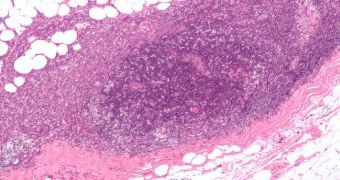Breast cancer can be treated more effectively if oncologists detect it in time, but this unfortunately does not happen all that often in practice. Now, researchers at the Washington University in St. Louis (WUSL) School of Medicine (WUSM) announce the development of a new tool for estimating breast cancer risks in women with a high degree of accuracy.
The model may soon enter mainstream use for gaging women's chances of developing this widespread condition. Patients identified as being subjected to this risk may benefit in the long run, if they start treatment long before the cancer has a chance to set in properly.
By using this approach, it may become possible to significantly increase breast cancer survival rates, scientists say. The WUSM team has been working on ways to improve their predictive tool for more than 20 years, and say that the approach is now ready for implementation in clinical settings.
Details of how the model operates appear in a paper published in the latest issue of the journal Breast Cancer Research and Treatment. The team says their tools takes into account factors such as alcohol consumption patterns, the body mass index, and women's age at their first menstrual period.
“Over the past 20 years, we have worked to develop a more complete model for classifying risk of breast cancer. The next step is to incorporate it into clinical practice so we can improve prevention,” explains WUSM researcher Graham A. Colditz, MD, DrPH.
He holds an appointment as the associate director for cancer prevention and control at the Siteman Cancer Center, a collaboration between WUSL and the Barnes-Jewish Hospital. Colditz is one of the co-developers of the new tool, called the Rosner-Colditz model for breast cancer.
Unlike other predictive methods, the new approach also takes into account less-common factors, such as the type of menopause women are experiencing, their ages when menopause set on, and whether or not their ovaries have been surgically removed.
The research group says that the model works best for women aged 47 to 69, and that it is 3 to 5 percent more accurate overall than any other predictive tool available today.
“One-quarter of all breast cancer cases are diagnosed in the 10 percent of women at highest risk in any five-year age group. These are the women who will benefit most from interventions that are known to reduce risk,” Colditz concludes.

 14 DAY TRIAL //
14 DAY TRIAL //